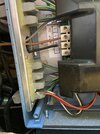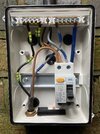In terms of "the work" that is being done (attempting to identify and correct suspected wiring errors) I'm not sure in what sense the OP (or anyone else) would do anything differently, regardless of whether the installation's supply was TN-S, TN-C-S or TT.The point is @Refinedgent has not stated if TN-S, TT, or TN-C-S and if he does not know, then not safe for him to do the work.
It is, of course possible that the tub was not originally installed in a manner which was safe with regard to the supply type. That's a potential problem with any 'inherited electrical installation' and, in this case, had it not been for the seemingly anomalous behaviour (non-hehaviour) of the second RCD the OP would have had no reason to be looking into the matters that he has reported here. I suppose you could therefore argue that anyone inheriting an electrical system should have it 'inspected' to make sure that it had been installed correctly, and was ;'safe'?
The issue is not even restricted to 'inherited electrical installations'. What if the OP (or anyone else) had himself had the tub installed by an 'electrician'? Very few members of the public would have any way of knowing whether it had been installed "safely with regard to the type of supply" - so should they be advised to always get a second electrician to inspect the work, to make sure that the first one has done it 'safely', or what?
As an aside, I also somewhat suspect (from the terminology he has been using) (although I obviously may be wrong) that the OP may well 'know' more than you are seemingly assuming.
Kind Regards, John



